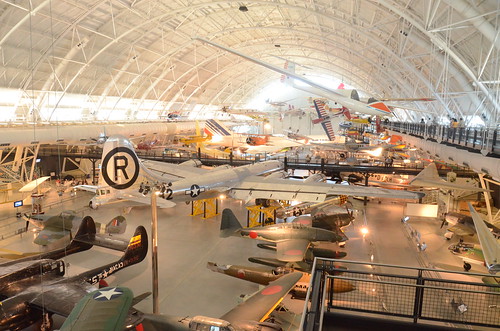Aerospace flies high in BC
Image by BC Gov Photos
Minister of Jobs, Tourism and Innovation Pat Bell comments on the job creating power of the aerospace industry in British Columbia along with Mark Van Rooij, Chief Executive Officer and President of AvCorp. Industries Inc. and Cathy Hawkins, senior manager, Boeing.
To read more, visit: www.newsroom.gov.bc.ca/2012/09/aerospace-is-flying-high-i…
Everyone from aerospace industry veterans, to hobby aircraft enthusiasts, can appreciate impressive technology when they see it. The Lockheed Martin c130 maintenance center at Cascade Aerospace, is the perfect example of a facility that was built to not only perform its job as an efficient and accessible c130 maintenance hub, but to leave visitors and customers awestruck. It’s all about the sheer size, cutting-edge technology and organized systems, which go into the daily procedures, at this state of the art aircraft base.
Cascade Aerospace is a full service, third party aircraft fleet management firm. They are the solution of choice for managing complex, long-term and integrated aircraft service support programs. Their clients include government, military, OEM and commercial customers. Cascade has a satellite operation in Trenton, ON, located on the Canadian Forces base, to provide c 130j and c130 maintenance services for the Department of National Defence.
The c130 maintenance facility itself is 230 000 square feet. That’s enough space to house eight narrow bodied aircrafts. The center was built in 2000, and it’s located within the Abbotsford International Airport, with airside access. The workshop runs as efficiently as aircrafts after being serviced at Cascade. The facility has many built in efficiencies including:
Hanger floor computers for quick access to technical data and parts ordering for c130 maintenance.
Automated tool and parts delivery to the shop floor
Bar-coded time and material management programs.
Vending machines that allocate consumables to each job.
Overhead cranes to easily remove tails, engines and stabilizers
Support shops including: avionics, electronics, machine shop, structures, paint shop, component repair and overhaul.
The c130 maintenance company, Cascade Aerospace offers a full range of aerospace services. Program management for example, has Cascade acting as the single point of accountability and customer interface, providing: integrated governance, project management, airworthiness management and fleet management. This branch of c130 maintenance ensures that the customer meets all schedule, price and quality requirements. Much more goes into the effective running of an aircraft fleet than can be imagined but the staff, in combination with a top notch c130 maintenance center; guarantee the smooth and streamlined operations of an aircraft fleet.
Aircraft modification is another specialty service offered by Cascade Aerospace. In addition to c130 maintenance, the firm can perform: major or minor aircraft modifications, structural refurbishment, center wing box replacements, avionics upgrades, interior installations, reconfigurations, and aircraft re-engining programs.
Cascade are specialists at c130 maintenance but they are also about extending the aircraft service life, reducing operational costs, and enhancing operational capabilities for their client’s fleet. Their reputation for providing the best solutions, while working actively with clients, is why the aerospace community is growing up under their wing. Both the Abbotsford International Airport, and city of Abbotsford, British Columbia have partnered with Cascade Aerospace to continue supporting and growing the aerospace industry in British Columbia. With c130 maintenance programs, fleet and program management, this is an aerospace facility that is sure to impress any aviation enthusiast.
Cascade Aerospace Inc. is a dynamic, privately-held Canadian specialty aerospace and defence contractor focused on providing long-term integrated aircraft support programs for Original Equipment Manufacturers [OEMs], military, government and commercial customers. For more information please visit www.cascadeaerospace.com.


